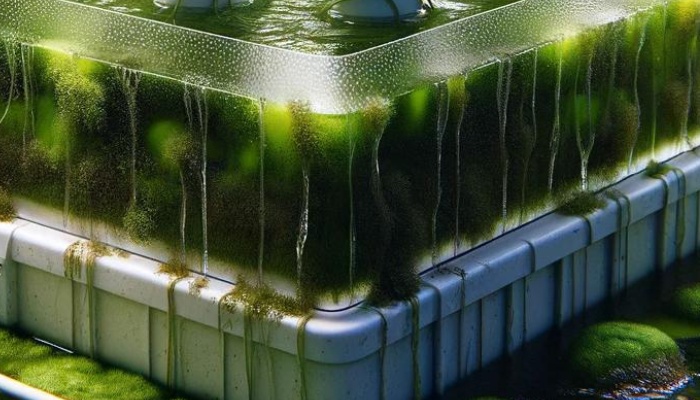Algae in your hydroponic system can seem like an army of green invaders, relentlessly attacking the roots of your growing plants. However, you’ve got a secret weapon in your arsenal: hydrogen peroxide.
This simple compound, when used correctly, can safeguard your plants by annihilating algae without harming your hydroponic garden.
So, how do you wield this powerful tool without causing collateral damage? Discover the essentials of using hydrogen peroxide effectively to turn your hydroponic nightmare into a thriving, algae-free paradise.
Understanding Hydrogen Peroxide
Hydrogen peroxide, a powerful oxidizer, can significantly boost plant growth when used correctly in hydroponic systems. Its chemical properties allow it to react with harmful microorganisms and algae, breaking them down into water and oxygen.
This not only purifies your water system but also delivers extra oxygen to your plant’s roots, promoting healthier, more vigorous growth.
However, it’s important to understand the health risks associated with handling hydrogen peroxide. Concentrations higher than 10% can cause skin and eye irritation upon contact.
In more severe cases, ingestion or inhalation of vapor can lead to internal damage, so it’s recommended to use gloves and eye protection during application. Always ensure your workspace is well-ventilated to minimize inhalation risks.
Preparing Your Hydroponic System
Properly preparing your hydroponic system for the use of hydrogen peroxide ensures its safety and efficacy. Here’s how to get started:
- System Cleaning: Before introducing hydrogen peroxide, thoroughly clean your hydroponic system. With a soft brush and a mild detergent solution, remove any visible algae, debris, or biofilm from the surfaces and channels. Rinse the system thoroughly with water afterward.
- Water pH Adjustment: Check and adjust the water pH levels in your hydroponic system. Hydrogen peroxide works best in a slightly acidic environment, with an optimal pH range between 5.5 and 6.5. Use a reliable pH meter to measure and adjust accordingly using pH up or down solutions.
- System Inspection: Ensure all parts of your hydroponic system, especially pumps and filters, are in good working condition. Faulty equipment can hinder the distribution of hydrogen peroxide, reducing its effectiveness against algae.
Calculating the Correct Dosage
Determining the precise amount of hydrogen peroxide to add to your hydroponic system is important for fostering healthy plant growth without causing damage.
The exact dosage depends on several factors, including the types of algae you’re combating. Different algae types may require slightly varied concentrations of hydrogen peroxide for effective eradication.
To start, you’ll need to identify the specific algae types plaguing your system. Green algae, for example, might be more resilient or susceptible to hydrogen peroxide treatments compared to blue-green algae.
Once you’ve pinpointed the algae types, researching their sensitivity to hydrogen peroxide is a good next step.
It is also wise to consider peroxide alternatives. While hydrogen peroxide is popular, other oxidizing agents can be equally effective against certain algae types and might offer a safer or more convenient handling experience.
As a rule of thumb, a starting point is to add 3% hydrogen peroxide at a rate of 2.5 ml per gallon of water in your hydroponic system. However, this is a baseline.
Adjustments may be necessary depending on your system’s size, algae types, and plant life. Always start with the lowest effective dosage and monitor your plants and algae response closely.
Applying Hydrogen Peroxide Safely
To ensure your hydroponic plants thrive without harm, you must apply hydrogen peroxide with careful precision and an understanding of its effects.
Handling this powerful oxidizer requires knowledge of the correct dosage, a commitment to safety, and awareness of its environmental impact.
Here’s how you can apply hydrogen peroxide safely:
- Wear Appropriate Safety Gear: Wear protective gloves and goggles. Hydrogen peroxide can be harsh on the skin and dangerous if it gets into your eyes. Protecting yourself, and ensure the process doesn’t lead to unnecessary accidents.
- Apply During the Right Time of Day: For outdoor hydroponic systems, apply hydrogen peroxide during the early morning or late evening. This timing helps minimize the solution’s breakdown from sunlight, maximizing its effectiveness against algae.
- Use the Right Tools for Application: Add the hydrogen peroxide solution to your hydroponic system using a dosing pump or a carefully measured pouring technique. Precision is key to avoid overdosing, which can harm your plants and upset the system’s balance.
Monitoring and Maintenance
Once you’ve applied hydrogen peroxide to your hydroponic system, it’s essential to keep a close eye on its balance and plant health for sustained success.
You’ll need to be vigilant because the introduction of hydrogen peroxide can alter the delicate ecosystem within your setup.
Start with regular pH testing, ideally daily in the beginning. Hydrogen peroxide can affect the pH level, and you’ll want to ensure it remains within the optimal range for your plants to absorb nutrients effectively.
Speaking of nutrients, nutrient management becomes even more important post-hydrogen peroxide application. Monitor the nutrient concentration closely.
You might find the need to adjust the nutrient solution more frequently to maintain the perfect balance that your plants need for growth. An imbalance can either starve your plants or burn them with excess.
Additionally, keep an eye out for signs of algae resurgence or any adverse reactions in your plants.
Early detection allows for quick adjustments, whether that means tweaking the concentration of hydrogen peroxide, adjusting the nutrient solution, or recalibrating the pH level.
Your goal is to maintain a clean, balanced, and thriving hydroponic system.

